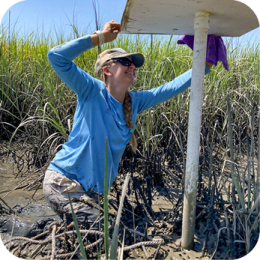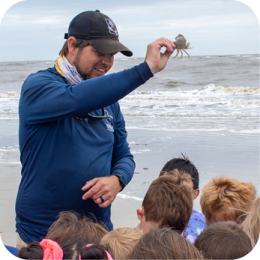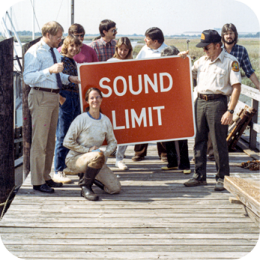 Scientific Name
Scientific Name
Mycteria Americana
Common Names
Wood stork, wood ibis, ironhead, flinthead, gourdhead, gannet, preacher, Spanish buzzard, Colorado turkey, wood pelican
Average Size
38 in. in height
62 in. in wingspan
5.5 lbs. in weight
 Habitat
Habitat
The wood stork is the only true stork (family Ciconiidae) that regularly occurs in the U.S. Wood storks breed in Georgia, Florida and South Carolina with colonies having been documented in 13 counties along the coast and across southern Georgia.
Beginning in late summer, wood storks gather into communal roosts along the coast. Over 100 birds may roost at favored sites, which are used year after.
The birds rest at the roost during high tide and move out into the salt marsh to feed during low tide. Wood storks use a variety of freshwater and estuarine wetlands for breeding, feeding, and roosting. Nests must be located in trees in standing water or on islands surrounded by water. Height of nests above the water ranges from 3-7 feet in small trees to over 66 feet in cypress trees.
Range & Description
The wood stork is a large, long-legged wading bird about 33-44 inches in height with a wingspan of 59-65 inches, and a large, down-curved bill. The plumage is mostly white, with the wing-tips, trailing edge of the wings, and tail colored black with a greenish sheen. Long black legs lead to pink toes. Adults have black bills, and have no feathers on their head and neck, but instead have black, scaly looking skin. Juveniles are yellow billed and have sparse, hair-like feathers on their head and neck.
Wood storks feed by grope feeding, also known as tacto-location. The birds wade through shallow water, moving their partially-opened beaks back and forth beneath the surface. When the bill touches a fish or other prey, it snaps shut in an exceedingly quick reflex. When a fish is caught, the bird raises its head and swallows the prey.
The life span of a wood stork in the wild is 11 years, 8 months, but the wood stork may live to over 30 years of age in captivity.
Benefits
The wood stork serves as an indicator species to help identify behavior patterns of surrounding creatures in the ecosystem. Indicator species act as a view into the past, present and future because their habitat requirements are closely associated with a single environment. There is a direct relationship between the quality of environment and the number/well-being of the indicator species in question. By closely observing the wood stork, we can gather crucial information about the surrounding environment and analyze trends overtime.
Photos Courtesy of Brad Winn - GA/DNR
GO BACK A PAGE
RETURN TO HOME








